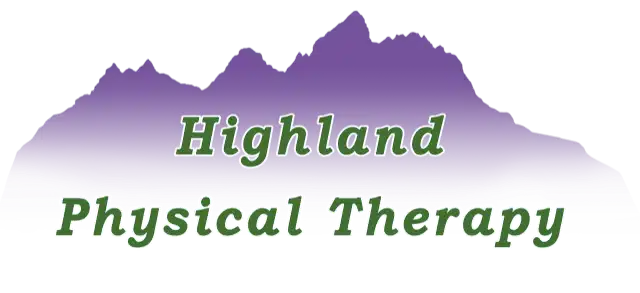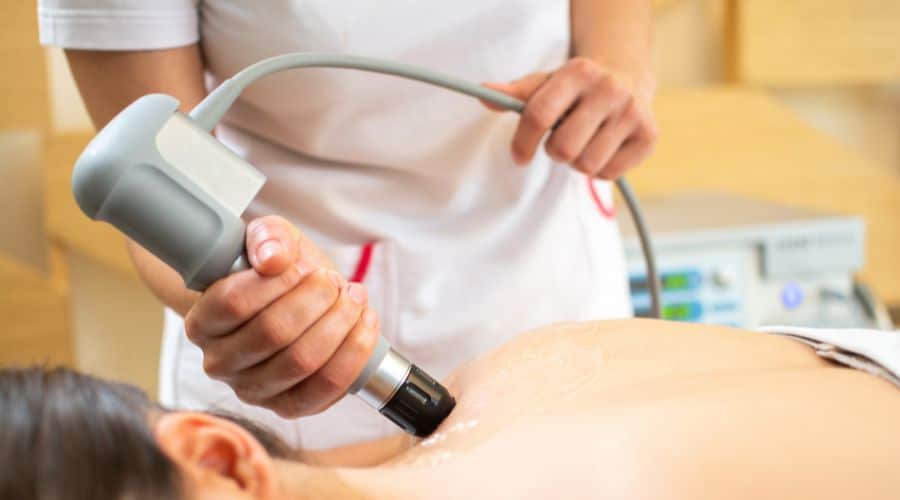Regenerative therapy is one of the most exciting and innovative fields in modern healthcare. It promises to provide long-term relief from chronic pain, injury, and a variety of conditions through non-invasive, drug-free treatments. As regenerative therapy grows in popularity, a lot of myths and misunderstandings have emerged around this form of treatment. It’s crucial to separate these myths from the facts so patients can make informed decisions about whether this therapy could be the right choice for them.
In this blog, we’ll explore some of the most common myths about regenerative therapy and debunk them with the facts. By the end, you’ll have a clearer understanding of how regenerative therapies, such as Shockwave Therapy and Stimpod Neurostimulation, can offer safe and effective solutions for chronic pain and injury recovery.
Myth #1: Regenerative Therapy is Only for the Very Young or Elite Athletes
Fact: While regenerative therapy, including techniques like Shockwave Therapy and StimPod Neurostimulation, has gained a strong following among athletes, it is not exclusive to them. In fact, people of all ages can benefit from regenerative therapies. These treatments are designed to help the body heal naturally, repair damaged tissue, and promote tissue regeneration, making them suitable for people suffering from a variety of conditions, whether they’re active athletes, office workers, or retirees.
Conditions like arthritis, tendonitis, plantar fasciitis, muscle strains, nerve pain, and joint stiffness often affect people of all ages and backgrounds. These therapies work by stimulating the body’s natural healing processes and promoting long-term recovery, regardless of age or activity level. Whether you’re recovering from an injury, managing chronic pain, or trying to regain mobility, regenerative therapy can be an effective, non-invasive treatment option.
Myth #2: Regenerative Therapy is Just a Placebo or Doesn’t Work Long-Term
Fact: Regenerative therapy is not a placebo. Shockwave therapy and StimPod neurostimulation are both backed by years of research and clinical studies that demonstrate their effectiveness in treating chronic pain, inflammation, and tissue damage.
Shockwave therapy uses high-energy sound waves to stimulate healing in tissues that have been damaged or are suffering from chronic inflammation. It’s especially effective for conditions like tendonitis, calcific shoulder tendinopathy, plantar fasciitis, and even some forms of arthritis. By stimulating blood circulation and tissue repair, shockwave therapy encourages the body’s healing process.
StimPod neurostimulation is another proven regenerative technique that helps treat nerve-related pain, such as neuropathy. It works by using low-frequency electrical impulses to promote healing and reduce pain in the affected nerve tissue. This therapy has shown to be effective in managing nerve pain caused by diabetes, trauma, and other underlying conditions.
Both therapies have a solid foundation in evidence-based science. For example, shockwave therapy has been recognized by the National Institute for Health and Care Excellence (NICE) for treating conditions like plantar fasciitis and calcific tendinopathy. Similarly, StimPod neurostimulation has been validated in numerous clinical studies for its ability to treat nerve pain and improve patient quality of life.
Myth #3: Regenerative Therapy Requires Surgery
Fact: One of the most significant advantages of regenerative therapy is that it is non-invasive, meaning there is no need for surgery. Unlike traditional surgical approaches, which often involve long recovery times, significant pain, and risks, regenerative therapies focus on using the body’s natural healing mechanisms to repair and restore function.
For example, shockwave therapy is a completely non-invasive procedure. It involves applying acoustic waves to the affected area, which stimulates blood flow and the body’s natural healing processes. The treatment is usually performed on an outpatient basis, and patients can typically return to their daily activities immediately after the session.
Similarly, StimPod neurostimulation uses electrical impulses to stimulate nerve healing and promote pain relief. This therapy is completely non-invasive and does not require surgery or recovery time. It is an ideal option for individuals looking for relief from nerve pain without the risks and complications associated with invasive surgeries.
Myth #4: Regenerative Therapy is Painful and Uncomfortable
Fact: While some people may experience mild discomfort during regenerative therapies, they are generally well-tolerated and much less painful than many people assume. Shockwave therapy, for example, may cause a sensation similar to a gentle tapping or slight discomfort during treatment, but it is typically not unbearable. Any discomfort usually subsides shortly after the session, and many people report feeling immediate relief from their pain after just a few treatments.
StimPod neurostimulation, on the other hand, involves low-frequency electrical impulses, which may cause a slight tingling or buzzing sensation in the affected area. While this may feel unusual to some people, it is typically not painful, and patients often find the treatment to be quite relaxing. The therapy’s primary aim is to promote healing without causing any discomfort, and most patients tolerate it very well.
Myth #5: Regenerative Therapy is Only for Treating Pain – It Can’t Help with Mobility
Fact: Regenerative therapies can significantly improve both pain relief and mobility. While pain relief is often the primary reason people seek out these treatments, regenerative therapy also plays a crucial role in improving joint function, restoring range of motion, and enhancing overall mobility. This is particularly important for individuals suffering from conditions like arthritis, joint stiffness, and tendonitis.
Shockwave therapy, for example, can help restore mobility by promoting tissue healing and reducing inflammation. This can lead to improved flexibility and joint function, helping people regain movement and perform daily activities with greater ease. For those suffering from conditions like frozen shoulder or tennis elbow, shockwave therapy can provide significant relief from both pain and stiffness, helping individuals regain normal joint movement.
StimPod neurostimulation, while effective for managing nerve-related pain, also plays a role in improving mobility. By stimulating the nerves and encouraging tissue regeneration, StimPod therapy helps reduce discomfort and improve function in areas like the hands, feet, and legs. This is especially beneficial for individuals with neuropathy or nerve damage, as it helps restore sensation and movement in affected areas.
Myth #6: Regenerative Therapy is Expensive and Not Covered by Insurance
Fact: While the cost of regenerative therapy can vary depending on the specific treatment and location, many people find that these therapies are more affordable in the long term compared to traditional treatments like surgery or long-term medication use. Additionally, many clinics offer flexible payment plans, making it easier for patients to access these treatments without significant financial strain.
As for insurance coverage, it depends on the policy and the provider. In some cases, insurance may cover certain regenerative therapies, particularly if they are deemed medically necessary. Shockwave therapy, for instance, is sometimes covered by insurance for conditions like plantar fasciitis, depending on the patient’s plan and the criteria for medical necessity.
Even if insurance does not cover these treatments, many patients find that the cost of regenerative therapies is well worth the investment, as they often provide long-lasting pain relief and functional improvements without the need for costly, ongoing medications or invasive surgeries.
Myth #7: Regenerative Therapy Requires Multiple Sessions for Minimal Results
Fact: While results may vary depending on the individual and the condition being treated, many patients begin to experience significant improvements after just a few sessions of regenerative therapy. For example, shockwave therapy typically requires a series of 3-5 treatments, spaced about a week apart, to achieve optimal results. However, many patients notice pain relief and improved mobility after the first or second session.
StimPod neurostimulation often requires multiple sessions to achieve the full benefit, especially for chronic nerve pain. However, patients often begin to experience noticeable improvements after just a few treatments, with continued progress as the therapy continues.
Unlike traditional therapies that may require ongoing treatments or medications, regenerative therapy focuses on addressing the root cause of pain or dysfunction, which can lead to longer-lasting results. Many people find that after a course of regenerative therapy, they no longer need continuous treatments to maintain relief and mobility.
Conclusion
There are many misconceptions about regenerative therapy, especially when it comes to treatments like shockwave therapy and StimPod neurostimulation. However, when you separate the myths from the facts, it’s clear that regenerative therapy offers a safe, effective, and non-invasive alternative to traditional treatments for chronic pain and injury.
Whether you’re suffering from joint pain, tendonitis, arthritis, neuropathy, or other chronic conditions, regenerative therapy provides a promising solution that promotes healing and restores mobility. By addressing the root causes of pain, these therapies help your body heal naturally, without relying on medications, surgery, or other invasive procedures.
If you’re struggling with chronic pain or limited mobility, don’t let myths and misconceptions hold you back from exploring regenerative therapy.
Monthly Offer: Free Discovery Visit
If you’re struggling with chronic pain or know someone who is, don’t wait any longer to take action. We’re offering a Free Discovery Visit this month to help you take the first step toward relief. During your visit, we’ll assess your condition, discuss your symptoms, and create a personalized plan to help you find lasting relief.
It’s time to take control of your health and get back to doing what you love, without the constant discomfort of chronic pain. Call us today at (208) 237-2080 to schedule your Free Discovery Visit, or visit our website at Physical Therapy Pocatello, Idaho – Highland Physical Therapy to learn more.
More Free Resources:
Enjoy Gardening While Protecting Your Back – Highland Physical Therapy
Upper Back Pain Relief at Home: Simple Exercises for Quick Comfort – Highland Physical Therapy
Find Relief With Our Lower Back Pain Self Care Tips – Highland Physical Therapy


